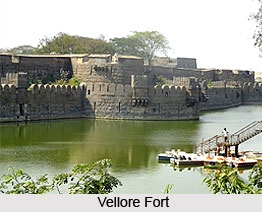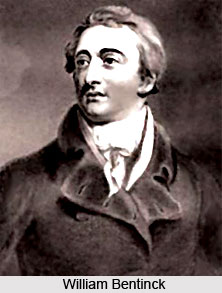 The Vellore Mutiny was the first illustration of a mutiny by native sepoys (soldiers) against the British East India Company. It antedates even the Sepoy Mutiny of 1857 by half a century. The revolt, which was waged in the South Indian town of Vellore, was rather brief, lasting only one full day. But the extent of brutality it had employed is unsurpassed in warring tactics of those times. Mutineers broke into the Vellore Fort and killed and injured 200 British troops, before they were hushed by reinforcements from nearby Arcot. On an average, execution of about 100 mutineers took place during the suppression of the outbreak, killing over 600 of the mutineers.
The Vellore Mutiny was the first illustration of a mutiny by native sepoys (soldiers) against the British East India Company. It antedates even the Sepoy Mutiny of 1857 by half a century. The revolt, which was waged in the South Indian town of Vellore, was rather brief, lasting only one full day. But the extent of brutality it had employed is unsurpassed in warring tactics of those times. Mutineers broke into the Vellore Fort and killed and injured 200 British troops, before they were hushed by reinforcements from nearby Arcot. On an average, execution of about 100 mutineers took place during the suppression of the outbreak, killing over 600 of the mutineers.
Causes of Vellore Mutiny
The immediate causes of the mutiny revolved mainly around resentment towards changes in the sepoy dress code. This was introduced in November 1805. Hindus were prohibited from putting any religious marks on their foreheads while on duty and Muslims were required to shave their beards and their moustaches. General Sir John Craddock, Commander-in-Chief of the Madras Army, ordered to wear a round hat. The new headdress comprised a leather cockade and it was intended to replace the existing turban. These offended both Hindu and Muslim sepoys and ultimately became contrary to an earlier warning by a military board that sepoy uniform changes should be "given every consideration which a subject of that delicate and important nature required".
The presence of the exiled family of the late Tipu Sultan may also have contributed to the current hostility. Tipu Sultan`s sons were imprisoned at the Vellore fort since 1799. One of Tipu Sultan`s daughters was to be married on July 9 1806. The plotters of the mutiny amassed at the fort under the ruse of attending the wedding. Two hours after midnight, on July 10, the sepoys (soldiers) surrounded the fort and killed most of the British. The rebels seized control by daybreak and raised the flag of the Mysore Sultanate over the fort. Tipu`s second son Fateh Hyder was declared King.
 Outbreak of Vellore Mutiny
Outbreak of Vellore Mutiny
The 1500 Sepoys located in the Vellore garrison, killed or wounded over 200 of 370 Europeans in the fort, on the fated day of July 10. The Vellore Mutiny was however rapidly smashed due to quick response of Colonel Robert Gillespie (1766-1814). The Colonel, coming from Arcot, sixteen miles away, brought cavalry and horse artillery to Vellore and immediately obliterated out of hand 300 to 400 mutineers. Indian disaffection appeared to have come in opposition to orders by Sir John Cradock, Commander in Chief of the Madras Army. Cradock had ordered the removal of caste marks by the sepoys while on duty and replaced the turban with a new-styled leather headgear.
A British officer had escaped and alerted the garrison in Arcot. Nine hours later, the British 19th Light Dragoons, led by Colonel Gillespie and the Madras Cavalry entered the fort through gates that had not been fully secured by the sepoys. The remaining of the Vellore Mutiny was a foregone conclusion.
Aftermath of Vellore Mutiny
After the incident, the imprisoned royals were transferred to Calcutta. The controversial meddling with social and religious customs of the sepoys was abolished. Flogging also was parted with. Following the mutiny, both Cradock and Lord William Bentinck (1774-1839), Governor of Bombay, were sacked.



















